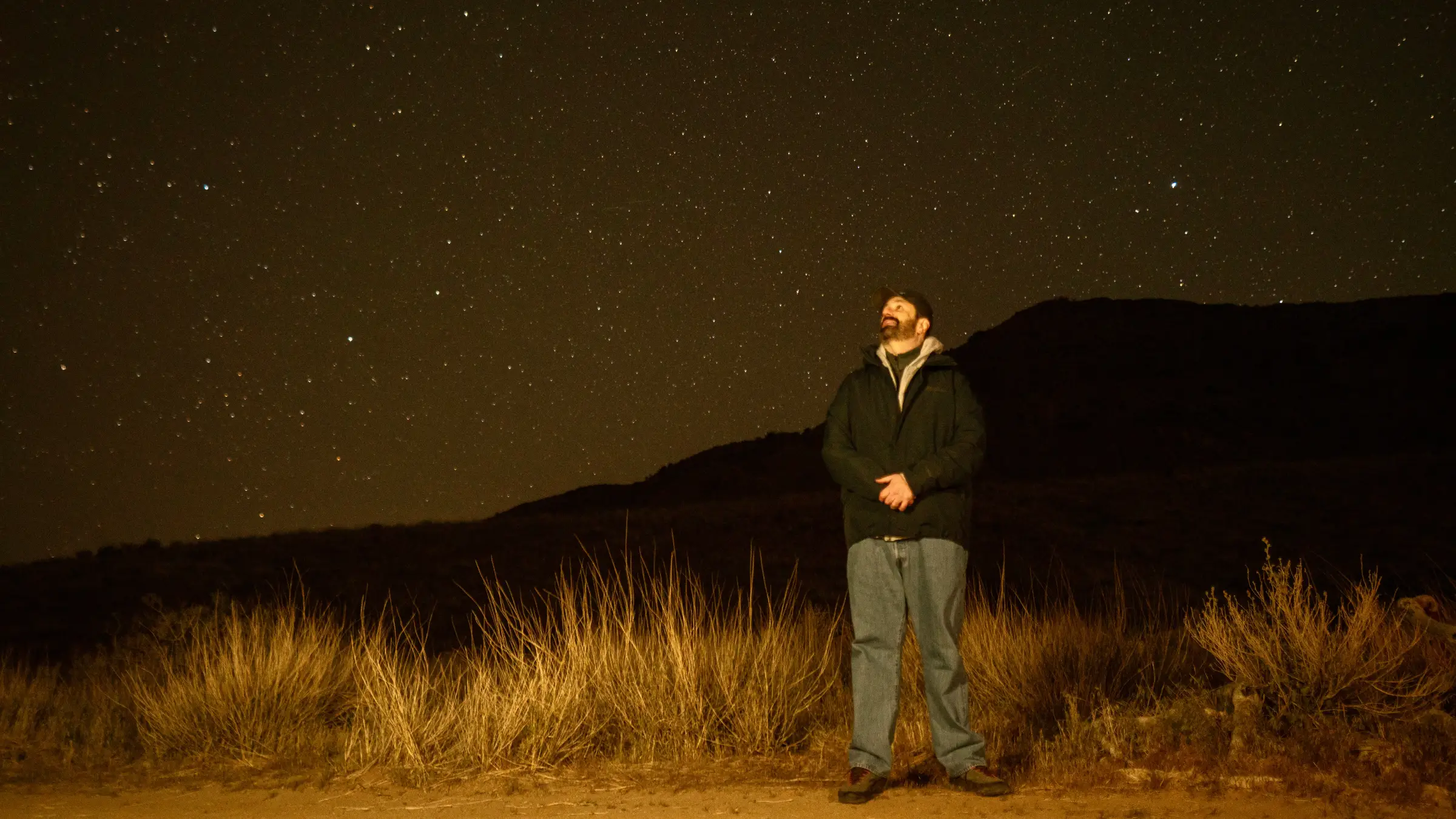I drove to the middle of nowhere in the middle of the night, on roads that were unlit, unpaved, and unmarked, to ponder the great mysteries of the cosmos.
Are we just random specks of consciousness in an infinite, indifferent universe?
What exists beyond what we can observe, perceive, and imagine?
And, would I be able to find my way back to civilization?
The answers:
- Fuck if I know.
- Fuck if I know.
- It depends on how you define civilization.1
Priceless Views—At A Price
The middle of nowhere was actually somewhere north of Joshua Tree National Park in California. The area has virtually no light pollution, and the day I arrived—Friday, April 26—would coincide with the Super New Moon. If you want optimal conditions for stargazing, you can’t do much better than that unless you leave Earth, which I didn’t want to do because this is the planet where all my stuff is.
It’s also the only planet that takes American Express, which is good, because it costs $200 to book Stargazing Joshua Tree’s Dark Sky Experience.2

“Are you saying you paid two hundred bucks to look at the sky?” I hear you asking.
Of course not.3
I paid two hundred bucks for a guide who explained what the hell I was looking at, two optical telescopes, four digital telescopes, a pair of binoculars, comfy seats and blankets, hot drinks, snacks, and a small team that set everything up.
Money well spent.4


Space Sombreros!
As mentioned above, we had two optical and four digital telescopes.
The optical telescopes magnified things the old-fashioned way: with a whole bunch of lenses and mirrors. If you crack one open, you’ll find a lot of things in common with the telescopes Galileo built more than 400 years ago when he discovered two of Jupiter’s moons, Figaro and Magnifico.5
Using a Unistellar eVscopes after using an optical telescope is like writing an email after carving a message into a rock.6 Despite being smaller and lighter than their optical ancestors, the digital telescopes were more powerful and provided clearer, brighter images. Their only problem, in my opinion, is that they don’t lend themselves to stupid “Bohemian Rhapsody” references.
Digital telescopes are great for astrophotography. Here are some of the space oddities I saw that night:






The Right Stuff. Or Was It Left? I Hope I’m Not Lost.
The average temperature in outer space is -455° F (or -270° C). That’s about as cold as I felt as I bumbled back to my car at the end of the night, with only a tiny red flashlight to guide the way.7
I cautiously started the car and retraced the route back to the hotel, trying not to catastrophize and imagine getting lost, running out of fuel, trying to subsist in the woods, and eventually getting ripped to shreds by a homophobic mountain lion.8
I was sure I had made a wrong turn.
I glanced at the GPS repeatedly, anxiously waiting to see a cell signal or anything resembling a road.
Finally, I saw a bar. Then, another bar. Then, a really big bar—Pappy & Harriet’s Pioneertown Palace. I had a sense of where I was and how to return to where I was staying. I could use the North Star to navigate my way home. Or, better yet, Siri. Let’s use Siri.
Sure, I wasn’t any closer to sussing out the universe, but I wasn’t too far from a warm Airstream with lots of blankets. That was good enough for me.
A Note on the Photos
I believe in giving credit where credit’s due. All of the photos above, including the featured image at the top of the post, are from Stargazing Joshua Tree. Their photographer used a Sony SLR camera at the ISO 2000 setting. Pretty good, right?
They also provided all the images from the digital telescopes.
I was able to get some impressive shots with my iPhone 16 Pro. Here are two of the best:


Footnotes, the Final Frontier
- I’m back in Florida now, so the answer is probably no. ↩︎
- It’s listed on Viator as Professional Stargazing in Joshua Tree. ↩︎
- You are talking to a blog post. You know I’m not there and can’t hear you, right? ↩︎
- I want to give the experience five stars, but that seems like a pretty bad rating when you consider there are billions of trillions of stars in the universe. ↩︎
- Please do not crack open the telescopes. ↩︎
- As per my last rock … ↩︎
- OK, it was 47° F, but the wind chill brought things down to 35° F. That’s pretty darn cold for a Floridian, even though I was wearing four layers of outerwear. ↩︎
- I know this is a ridiculous scenario. Mountain lions are staunch LGBTQ allies. It’s the coyotes who hate us. ↩︎

